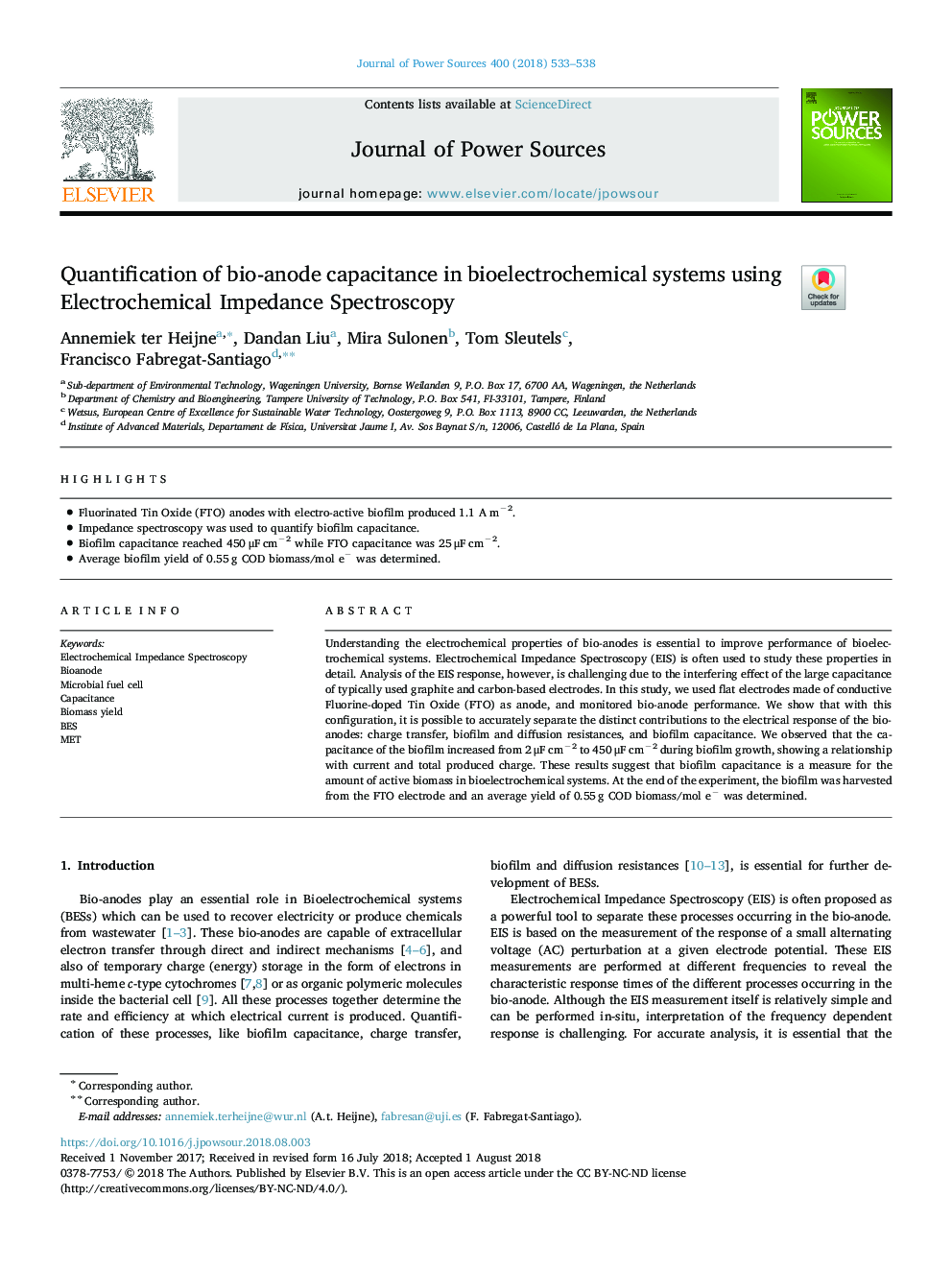| Article ID | Journal | Published Year | Pages | File Type |
|---|---|---|---|---|
| 11005928 | Journal of Power Sources | 2018 | 6 Pages |
Abstract
Understanding the electrochemical properties of bio-anodes is essential to improve performance of bioelectrochemical systems. Electrochemical Impedance Spectroscopy (EIS) is often used to study these properties in detail. Analysis of the EIS response, however, is challenging due to the interfering effect of the large capacitance of typically used graphite and carbon-based electrodes. In this study, we used flat electrodes made of conductive Fluorine-doped Tin Oxide (FTO) as anode, and monitored bio-anode performance. We show that with this configuration, it is possible to accurately separate the distinct contributions to the electrical response of the bio-anodes: charge transfer, biofilm and diffusion resistances, and biofilm capacitance. We observed that the capacitance of the biofilm increased from 2â¯Î¼Fâ¯cmâ2 to 450â¯Î¼Fâ¯cmâ2 during biofilm growth, showing a relationship with current and total produced charge. These results suggest that biofilm capacitance is a measure for the amount of active biomass in bioelectrochemical systems. At the end of the experiment, the biofilm was harvested from the FTO electrode and an average yield of 0.55â¯g COD biomass/mol eâ was determined.
Keywords
Related Topics
Physical Sciences and Engineering
Chemistry
Electrochemistry
Authors
Annemiek ter Heijne, Dandan Liu, Mira Sulonen, Tom Sleutels, Francisco Fabregat-Santiago,
